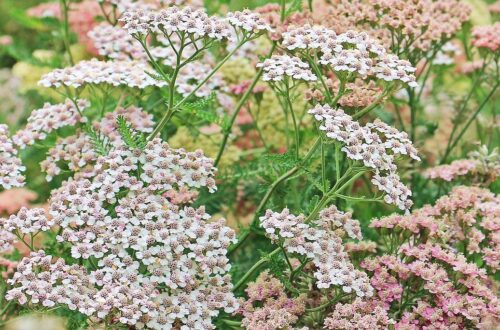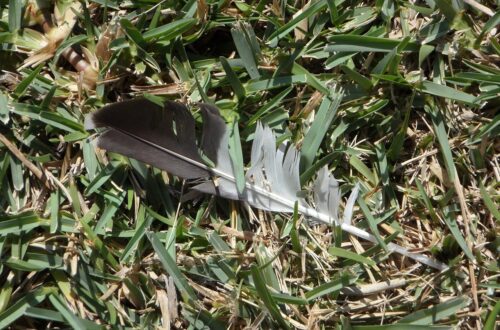Trees are vital parts of urban spaces. They add greenery and nature where people might otherwise only see concrete structures. However, they’re also at risk of specific illnesses due to numerous factors. Learning more about tree diseases most common in cities will reveal what causes them and how you can better care for your trees in the long term.
Common Urban Tree Diseases
Diseases affect urban and wild trees, but those growing within cities and towns get sick more often than people might expect. The frequency depends on the conditions present within a given area. A variety of bacteria and virus-induced illnesses can occur throughout an urban tree’s lifespan, including:
- Sudden oak death
- Anthracnose
- Thousand cankers disease
- Armillaria root rot
- Dutch elm disease
- Dothistroma needle blight
Bugs can cause tree diseases, too. Research shows that 23% of urban spaces experience 95% of insect-induced tree mortality, which people categorize as bug blights. While insects and bacteria can be prevented, you can study how they affect wooded areas to better spot disease outbreaks and stop them from damaging your local environment.
Signs That a Tree Is Sick
Learning how to recognize the symptoms of a sick tree will ensure your community can take action quickly. Each disease has unique causes and manifestations, but the most common signs of tree illness are symptoms such as:
- Spotted or blackened leaves
- Color changes in the bark
- Loss of leaves
- Softened branches
- Stunted growth
- Trunk or branch swelling
- Lesions on the bark or leaves
- Trunk leaning
If you suspect a tree is sick, visually inspect it. Does the bark appear like it always has? Is the trunk the same color as usual? If you notice S-shaped markings on the bark, you’ll likely find ½-inch bullet-shaped bugs called emerald ash borer larvae weaving around the tree. The damage leaves open wounds for bacteria to invade and potentially cause decay.
You can also note any visible changes on the leaves or branches. Gently test them by seeing how much a branch bends under your hand. If you or other community members are unsure about potential symptoms, a local arborist can assist in disease identification. They may even volunteer their time if you start a local hobby group where everyone spends their afternoons caring for wooded areas around your city.
Factors Causing Tree Illnesses
People are becoming more invested in urban tree-planting efforts due to influences like rising city pollution. A year after planting trees around a school, a 4-pound reduction in air pollution was noted because the trees removed airborne contaminants. However, certain disease factors are still present in urban areas.
Fungi can attach themselves to trees in city centers if they travel on the wind. They may originate from local gardens, but can also thrive in damp, dark spaces like inside dumpsters or around water features.
Soil with decomposing organic matter may also facilitate bacteria or fungi growth. Parks, gardens, walkways, construction sites, and other areas with exposed soil may become sources of disease-inducing microorganisms. When they reach trees through airborne spore dispersal, water runoff or soil contamination, they can cause illnesses throughout the city.
Unchecked bug populations can also cause tree diseases. They may lay eggs in lesser-visited city spaces like older public parks. If left unchecked, the insects will spread to other trees and affect local green spaces.
Ways People Can Fight the Diseases
Spotting insects and fighting microorganisms may seem challenging, but there are many ways to protect your local trees. Talk with other residents who care about your cause. You can make a greater difference if you have more people helping you.
Strategize what you might start with, depending on where you live. If you reside in a farm town, you might focus on ground contamination from nearby industrial farms. Trees often absorb pollutants in the soil that make them sick, but you can work with community members to reduce contaminants through local activism.
Advocating for public park and garden funding is another way to reduce tree diseases in your city. Bugs and illnesses will fester where people aren’t looking. If your city maintains public park funding, you’ll have employees caring for the plants regularly. They could receive training from local arborists to better spot signs of tree illnesses.
Reducing pollution exposure can also help local wooded areas. Directing water runoff more effectively will steer rainwater carrying highway pollution away from parks. Improving drainage would also mitigate damp soil, which could lead to bug infestations that make trees sick. Bacteria and insects can’t thrive if they don’t have the proper conditions. Well-drained soil makes it more difficult for them.
Learning how to identify tree diseases is an important step in protecting your local environment. If you work with other concerned residents, you can spot illnesses, help wooded areas recover, and prevent future outbreaks through ongoing environmentalist efforts.
Jack Shaw is the senior Outdoors writer for Modded, a men’s lifestyle publication. An avid outdoorsman and lover of nature, he’ll often find himself taking retreats out to explore his environment and encourages others to do the same in ways that are sustainable and beneficial to the environment.
Image by NoName_13





